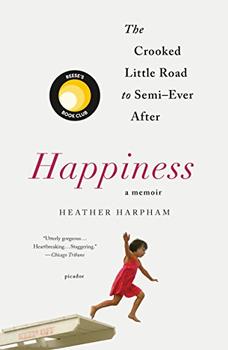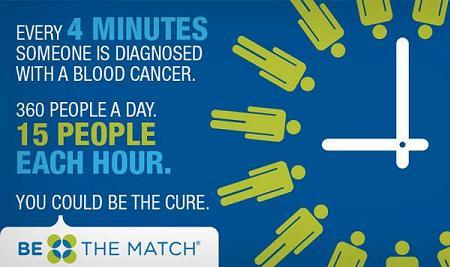Summary | Excerpt | Reading Guide | Reviews | Beyond the Book | Read-Alikes | Genres & Themes | Author Bio

The Crooked Little Road to Semi-Ever After
by Heather HarphamThis article relates to Happiness
In Happiness: The Crooked Road to Semi Ever After, the author's newborn has a rare blood disease and requires a bone marrow transplant to survive.
Bones have soft tissue at their core called marrow; marrow contains immature or undifferentiated cells known as stem cells. There are two main types of stem cell: one produces bone, cartilage, marrow fat and other connective tissues, to repair and maintain the skeletal system. The other produces blood-forming cells, which produce the main constituents of blood - red blood cells, white blood cells and platelets. When blood cell production is interrupted by disease, cancers (such as leukemia) or genetic abnormalities (such as sickle cell anemia), a person becomes gravely ill and a marrow transplant from a healthy donor is often called for. Bone marrow transplants are also often necessary to regenerate a new immune system after the marrow has been damaged, for example following chemotherapy or radiation, and can also be used to treat some genetic diseases.
Bone marrow is not the only source of stem cells; other sources include the person's own blood, and umbilical cord blood collected after a baby is born. A newborn's umbilical cord is rich with stem cells and there is a growing trend for parents to privately store their newborn's cord blood for possible use in the future (the blood can be stored for 20+ years) but the cost is not insignificant and awareness is still low, so relatively few do it. In 2013, according to bioinformant.com, 102,000 new cord blood and tissue units were stored in the USA, representing about 2.6% of births. It is also possible to donate to public cord blood banks at no cost to the parents but (perhaps suprisingly given how valuable this resource is that is otherwise just thrown away) it seems that remarkably few cords are stored. For example, Britain's National Health Service operates the fourth largest public cord bank in the world based on donations, but its website states that approximately 22,000 cord blood units are stored (of which just 16,000 are available for transplant.)
Thus, bone marrow remains a valuable source of stem cell transplants.
Sometimes patients can be treated with stem cells from their own bone marrow, which is collected before starting treatment, but in most cases a donor must be found. Matching donors to patients is much more complicated than matching a blood type, and 70% of patients don't have a fully matched donor in their family. The most important factor is closely matching human leukocyte antigens (HLA) – proteins found in most blood cells that are used by the immune system to identify which cells belong to the body. The likelihood of finding this type of match largely depends on ethnic background, since some races have more complex tissue types than others, plus there's currently a large disparity between the number of potential doners by race; Caucasians, for example, have a 97% chance of finding a match, while Asians have a 72% chance. Mixed ethnicities have the most difficult time finding a suitable donor. Age of the donor is also a factor as contributions from younger donors lead to better chances for long-term survival; 95% of bone marrow transplants are from donors aged 18 – 44.
 If you are interested in being a bone marrow donor, the first step is to register for free at a bone marrow bank such as Be The Match, a non-profit agency operated by the National Marrow Donor Program (which also accepts cord blood donations.) A sample of your cells will be collected by simply rubbing a cotton swab around the inside of your cheek. The cells on the swab are then tested for HLA with the results entered into a database. Once registered, there's a one in 430 chance of being contacted as a possible match for a patient; at which point more in-depth blood tests will be conducted to check your compatability.
If you are interested in being a bone marrow donor, the first step is to register for free at a bone marrow bank such as Be The Match, a non-profit agency operated by the National Marrow Donor Program (which also accepts cord blood donations.) A sample of your cells will be collected by simply rubbing a cotton swab around the inside of your cheek. The cells on the swab are then tested for HLA with the results entered into a database. Once registered, there's a one in 430 chance of being contacted as a possible match for a patient; at which point more in-depth blood tests will be conducted to check your compatability.
If you are a match and you agree to be a donor, the next step is a surgical procedure that takes place in an operating room under general anesthetic. A large syringe is used to withdraw liquid marrow from both sides of the back of the pelvis, a process that takes about one to two hours. The fluid is then fed into the patient via a tube, a similar process to receiving a blood transfusion or an IV drip.
The operation itself, conducted under general anasthetic, should be pain free, but most donors report moderate pain and fatigue in the few days after surgery: 84% felt back or hip pain, 61% complained of fatigues, and 24% had muscle pain. However, most recover fairly quickly (back to normal activity within a week after their donation) and the cells removed are fully regenerated in 4 – 6 weeks. Less than 5% of a person's bone marrow is removed, so the donor's immune system isn't impacted.
by Kim Kovacs
Filed under Medicine, Science and Tech
![]() This "beyond the book article" relates to Happiness. It originally ran in August 2017 and has been updated for the
November 2018 paperback edition.
Go to magazine.
This "beyond the book article" relates to Happiness. It originally ran in August 2017 and has been updated for the
November 2018 paperback edition.
Go to magazine.
Your guide toexceptional books
BookBrowse seeks out and recommends the best in contemporary fiction and nonfiction—books that not only engage and entertain but also deepen our understanding of ourselves and the world around us.